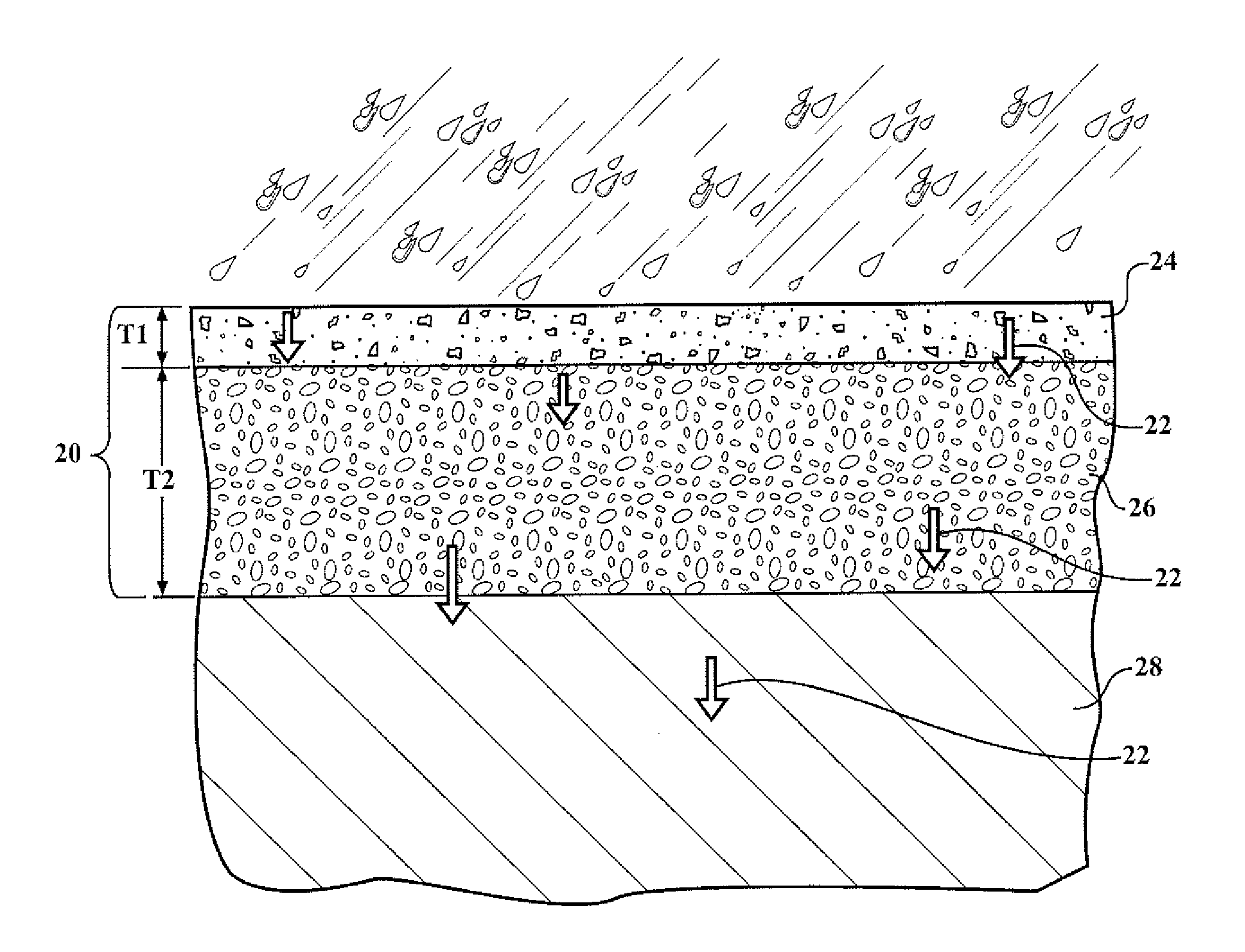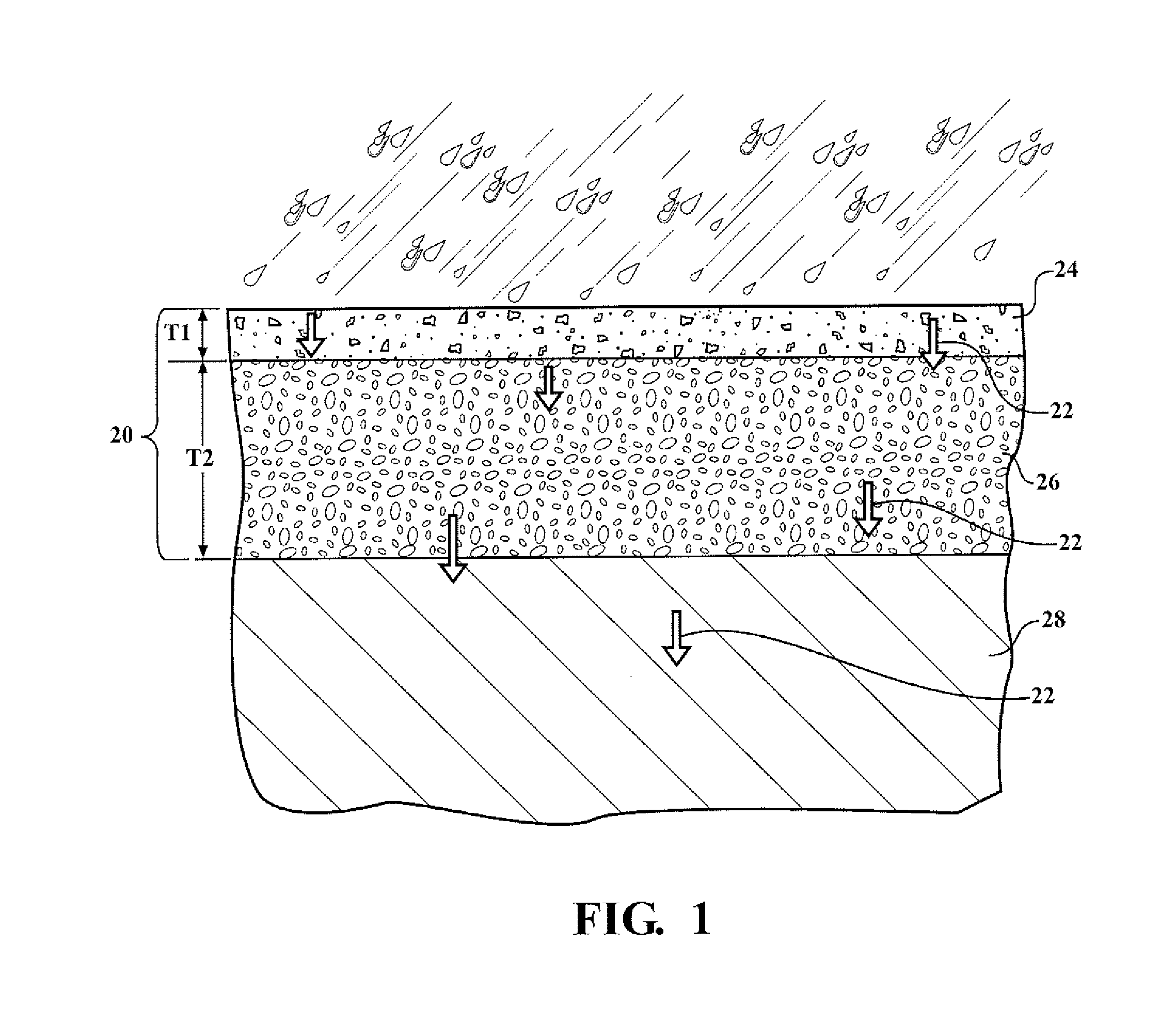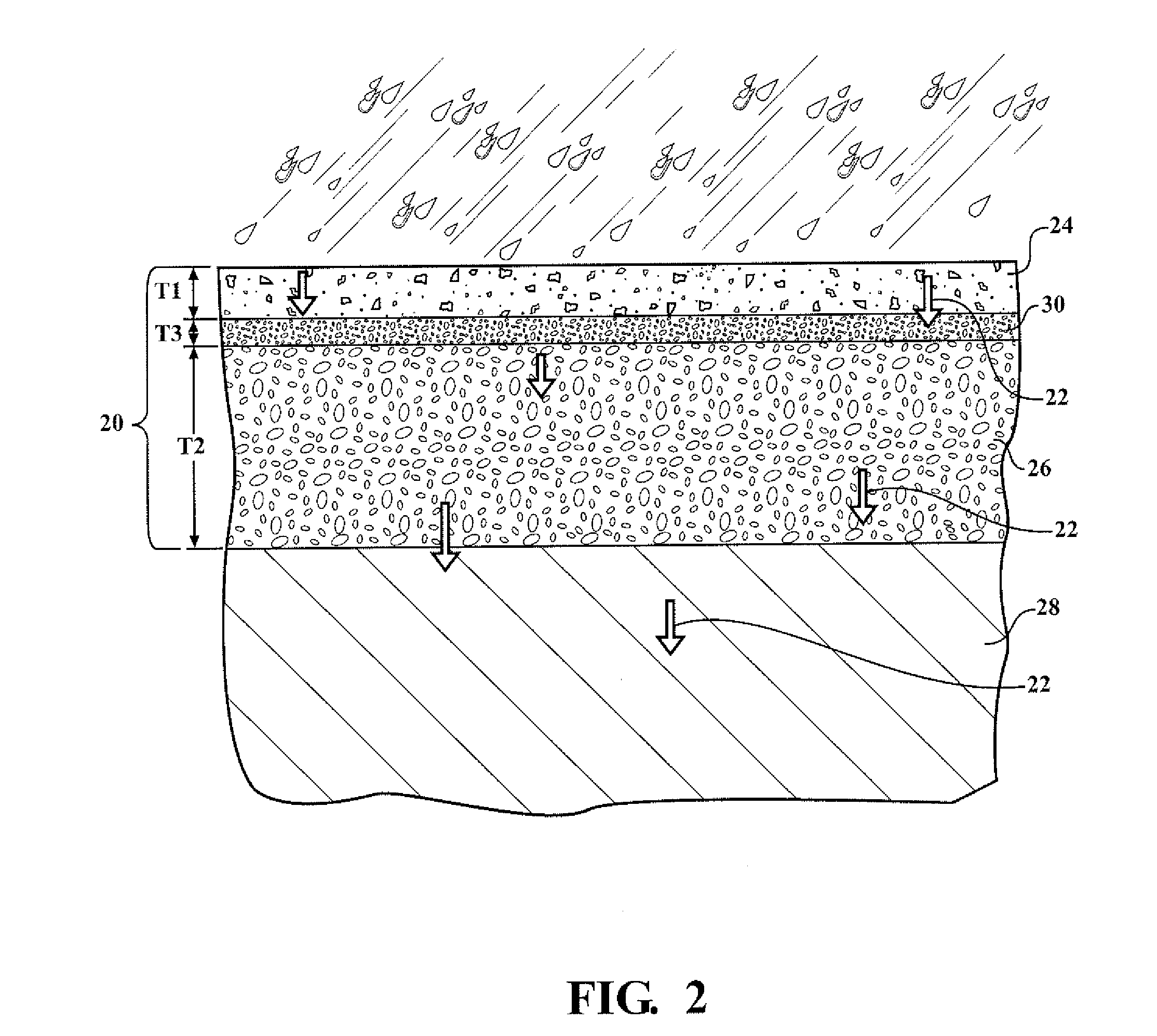Composite Pavement Structures
a pavement structure and composite material technology, applied in the field of composite pavement structures, can solve the problems of inconsistencies in the composite material, the composite material is required to be replaced at additional cost, and the working time of the composite material is further reduced once onsite, so as to improve the compressive strength, improve the bonding strength, and improve the physical properties.
- Summary
- Abstract
- Description
- Claims
- Application Information
AI Technical Summary
Benefits of technology
Problems solved by technology
Method used
Image
Examples
examples
[0150]Examples of the resin and isocyanate components of the system are prepared. Examples of the elastomeric composition are also prepared. The resin and isocyanate components are formed by mixing their respective components in a vessel. The vessel is a container capable of withstanding agitation and having resistance to chemical reactivity. The components of the resin and isocyanate components were mixed using a mixer for 1 to 3 minutes at 1000 to 3500 rpm. The resin and isocyanate components were mixed in a similar manner to form the elastomeric compositions.
[0151]The amount and type of each component used to form the Resin and Isocyanate Components are indicated in TABLES I and II below with all values in parts by weight (pbw) based on 100 parts by weight of the respective Resin or Isocyanate Component unless otherwise indicated. The symbol ‘-’ indicates that the component is absent from the respective Resin or Isocyanate Component.
TABLE IExample 1Example 2Example 3Resin Compone...
PUM
| Property | Measurement | Unit |
|---|---|---|
| diameter | aaaaa | aaaaa |
| thickness | aaaaa | aaaaa |
| thickness | aaaaa | aaaaa |
Abstract
Description
Claims
Application Information
 Login to View More
Login to View More - R&D
- Intellectual Property
- Life Sciences
- Materials
- Tech Scout
- Unparalleled Data Quality
- Higher Quality Content
- 60% Fewer Hallucinations
Browse by: Latest US Patents, China's latest patents, Technical Efficacy Thesaurus, Application Domain, Technology Topic, Popular Technical Reports.
© 2025 PatSnap. All rights reserved.Legal|Privacy policy|Modern Slavery Act Transparency Statement|Sitemap|About US| Contact US: help@patsnap.com



